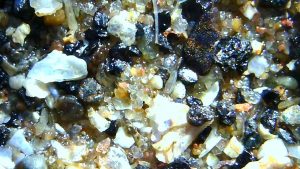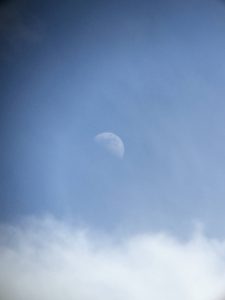TL;DR
- Perspective is an important part of problem-solving.
- Changing your perspective is not always easy.
- You can learn a lot when you take the time to change your perspective.
Our family takes big vacations during the summer. We snorkel, climb mountains, and hike through the woods. Our family explores the many different landscapes within the United States. We experience new cultures in different countries. And as we do all of this, we document the journey with pictures. Pictures of family, of the places we stay, of the food we eat, and of the natural beauty around us.
A few years back, my husband and I noticed that we tend to take pictures in very different ways. He loves to get the big sweeping views and capture our family members gathered together in a group. I am more interested in the small (often the microscopic)—a single rock, a bug, a flower, a leaf. We came to this conclusion when he told me that his favorite picture from one of our trips was my microscopic picture of sand. Not the mountain looming above us or the family photo with amazing scenery behind us, but sand.
Perspective: The End Result vs. The Process
When most people think about sand, they think of tan-colored tiny bits of rock, right? That is what you see in the pictures of most beaches—miles of blue water and tan-colored sand. Not me. I take my microscopes* with me when I go on hikes, and I use them to take pictures of the things that are small and often overlooked. When I look at sand, I think of all that it took to get it to that place. I think of the boulders and rocks, weathered over eons, eroded by water and wind, and then, finally, deposited at the beach. I think of the shells of animals that lived in the oceans many years ago, again, weathered, eroded, and deposited there on the beach. When you think of sand in that way, it comes as no surprise that there are vibrant and multicolored bits of rock and shell all mixed together to make that tan sandy beach. I have a different perspective and look for what others may miss.

Picture I took of sand with a microscope
(*Yes, that is meant to be plural. I have two portable microscopes: a digital microscope that connects to my phone via WiFi letting me see the images on my phone screen, and a Foldscope, which is a paper microscope that comes with a mini mobile laboratory for collecting samples and collecting scientific data in the field in real-time. Both fit easily into my day pack.)
Perspective: The Expected vs. The Unexpected

Telescopic picture of the moon taken during the day
I also take my portable monocular telescope with me on hikes. It is small, fits in my day pack, and has a phone attachment that lets me take really cool pictures on the go. Again, I use this to take pictures of things that many people overlook. I have gotten amazing pictures of things like the moon during the day, birds off in the distance, and animal tracks in the mud on the far side of a riverbank.
It always surprises me the number of people who don’t realize that you can see the moon during the day. It is usually the vastness of the sky, the brightness of the sun, and the large puffy clouds that catch people’s eye, not the moon as it silently, unobtrusively makes its way across the blue sky. I get great pictures of the daytime moon because I understand the cycle of the moon phases and know when and where in the sky to look for the moon during the day. Most people tend to wait for nighttime when the moon’s reflective surface stands out clearly in the dark sky (which can also lead to great pictures!).
[scroll down to keep reading]
Perspective: Multiple Perspectives and Multiple Solutions
You would think by now my family would expect these types of discoveries from me, but I still get the exclamations of, “Oh, wow! I didn’t even see that!” when I show them what I find. And that is because it is hard to change your perspective. It takes time, it takes intentionality, and it takes persistence to make it happen. But when you are able to collaborate with others and look at a problem from multiple perspectives, you are much more likely to be able to come up with a solution (or many solutions!) to the problem.
As educators, it is imperative that we teach our students how to see problems from different perspectives. This year is going to be filled with many challenges, but if we can get the right perspectives, just imagine the solutions we can come up with to make it a successful year! In the science classroom, when we teach with inquiry and give our students authentic learning experiences, imagine how much they will learn and grow when they view the problem from multiple perspectives, listen to different viewpoints, and try out a variety of ideas! This is the scientific and design process in action!
Take some time to reflect on ways that you can change your perspective on something (big or small). What could you learn by looking at it differently? How can you bring this idea of perspective into your classroom this year? Please reach out to me to share your story of perspective so that we can both science better.
About Holly Stuart
Holly Stuart is an 8th grade science and design teacher in South Carolina. Her educational passions include finding new and innovative ways to get more students interested in STEAM, student-inspired discovery through inquiry, and learning science by doing science.
In addition to her out-of-the-box thinking in the classroom, she has successfully implemented The Grid Method into her teaching practice which led to her becoming a Teach Better Team Ambassador. Holly is married to her high school sweetheart and is a mother to three children.
When not teaching, she enjoys traveling and being outside with her family. Some of their favorite outdoor activities include hiking, running, and biking. (Holly often brings her telescope, binoculars, and microscopes with her on hikes!) Her indoor hobbies include reading, coloring, and learning more about sketchnoting and drawing.



